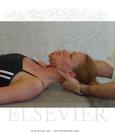Cervical Distraction Test: Difference between revisions
Nikki Arnold (talk | contribs) No edit summary |
No edit summary |
||
| Line 4: | Line 4: | ||
'''Lead Editors''' - Your name will be added here if you are a lead editor on this page. [[Physiopedia:Editors|Read more.]] | '''Lead Editors''' - Your name will be added here if you are a lead editor on this page. [[Physiopedia:Editors|Read more.]] | ||
</div> | </div> | ||
== Purpose<br> == | == Purpose<br> == | ||
To test for the presence of cervical radiculopathy.<ref name="Users' guide">Flynn TW, Cleland JA, Whitman JM. Users' guide to the musculoskeletal examination. United States; Evidence in Motion:2008.</ref> <ref name="Malange et al">Malange GA,Landes P, Nadler SF. Provocation tests in the cervical spine examination: historical basis and scientific analyses. Pain Physician. 2003;6:199-205</ref><br> | To test for the presence of cervical radiculopathy.<ref name="Users' guide">Flynn TW, Cleland JA, Whitman JM. Users' guide to the musculoskeletal examination. United States; Evidence in Motion:2008.</ref> <ref name="Malange et al">Malange GA,Landes P, Nadler SF. Provocation tests in the cervical spine examination: historical basis and scientific analyses. Pain Physician. 2003;6:199-205</ref><br> | ||
== Technique<br> == | == Technique<br> == | ||
Patient lies supine and the neck is comfortably positioned. Examiner securely grasps the patient's head under the occiput and chin and gradually applies an axial traction. | Patient lies supine and the neck is comfortably positioned. Examiner securely grasps the patient's head under the occiput and chin and gradually applies an axial traction. | ||
| Line 14: | Line 14: | ||
A positive test is the reduction or eliminatin of symptoms.<ref name="Wainner and Gill">Wainner RS, Gill H. Diagnosis and nonoperative management of cervical radiculopathy. J Ortho Sports PT.2000 Dec;30(12):728-744.</ref> | A positive test is the reduction or eliminatin of symptoms.<ref name="Wainner and Gill">Wainner RS, Gill H. Diagnosis and nonoperative management of cervical radiculopathy. J Ortho Sports PT.2000 Dec;30(12):728-744.</ref> | ||
<br> | <br> | ||
[[Image:Cervical distraction.jpg|Image:Cervical_distraction.jpg]] | [[Image:Cervical distraction.jpg|Image:Cervical_distraction.jpg]] | ||
== Evidence == | == Evidence == | ||
'''Cervical Distraction Test''' | '''Cervical Distraction Test''' | ||
Sensitivity .44 | Sensitivity .44 | ||
Specificity .97<ref name="Rubinstein et al">Rubinstein SM, Pool JJM, van Tulder MW, Riphagen II, de Vet HCW. A systemic review of the diagnostic accuracy of provocative tests of the neck for diagnosing cervical radiculopathy. Eur Spine J.2007;16:307-319.</ref> | Specificity .97<ref name="Rubinstein et al">Rubinstein SM, Pool JJM, van Tulder MW, Riphagen II, de Vet HCW. A systemic review of the diagnostic accuracy of provocative tests of the neck for diagnosing cervical radiculopathy. Eur Spine J.2007;16:307-319.</ref> | ||
Reliability .88<ref name="Wainner et al">Wainner RS, Fritz JM, Irrgang JJ, Boninger ML, Delitto A, Allison S. Reliability and diagnostic accuracy of the clinical examination and patient self-report measures for cervical radiculopathy. Spine. 2003;28(1):52-62.</ref> | Reliability .88<ref name="Wainner et al">Wainner RS, Fritz JM, Irrgang JJ, Boninger ML, Delitto A, Allison S. Reliability and diagnostic accuracy of the clinical examination and patient self-report measures for cervical radiculopathy. Spine. 2003;28(1):52-62.</ref> | ||
== Resources == | == Resources == | ||
| Line 34: | Line 34: | ||
== Recent Related Research (from [http://www.ncbi.nlm.nih.gov/pubmed/ Pubmed]) == | == Recent Related Research (from [http://www.ncbi.nlm.nih.gov/pubmed/ Pubmed]) == | ||
<div class="researchbox"> | <div class="researchbox"> | ||
<rss> | <rss>http://eutils.ncbi.nlm.nih.gov/entrez/eutils/erss.cgi?rss_guid=1FwYT_rsr_VrWUTFMSNBgXGbaCdJuQgR9EMkejNqgl_q0UJQ2F|charset=UTF-8|short|max=10</rss> | ||
</div> | </div> | ||
== References == | == References == | ||
Revision as of 19:45, 8 December 2009
Original Editor - Your name will be added here if you created the original content for this page.
Lead Editors - Your name will be added here if you are a lead editor on this page. Read more.
Purpose
[edit | edit source]
To test for the presence of cervical radiculopathy.[1] [2]
Technique
[edit | edit source]
Patient lies supine and the neck is comfortably positioned. Examiner securely grasps the patient's head under the occiput and chin and gradually applies an axial traction.
A positive test is the reduction or eliminatin of symptoms.[3]
Evidence[edit | edit source]
Cervical Distraction Test
Sensitivity .44
Specificity .97[4]
Reliability .88[5]
Resources[edit | edit source]
add any relevant resources here
Recent Related Research (from Pubmed)[edit | edit source]
Failed to load RSS feed from http://eutils.ncbi.nlm.nih.gov/entrez/eutils/erss.cgi?rss_guid=1FwYT_rsr_VrWUTFMSNBgXGbaCdJuQgR9EMkejNqgl_q0UJQ2F|charset=UTF-8|short|max=10: Error parsing XML for RSS
References[edit | edit source]
References will automatically be added here, see adding references tutorial.
- ↑ Flynn TW, Cleland JA, Whitman JM. Users' guide to the musculoskeletal examination. United States; Evidence in Motion:2008.
- ↑ Malange GA,Landes P, Nadler SF. Provocation tests in the cervical spine examination: historical basis and scientific analyses. Pain Physician. 2003;6:199-205
- ↑ Wainner RS, Gill H. Diagnosis and nonoperative management of cervical radiculopathy. J Ortho Sports PT.2000 Dec;30(12):728-744.
- ↑ Rubinstein SM, Pool JJM, van Tulder MW, Riphagen II, de Vet HCW. A systemic review of the diagnostic accuracy of provocative tests of the neck for diagnosing cervical radiculopathy. Eur Spine J.2007;16:307-319.
- ↑ Wainner RS, Fritz JM, Irrgang JJ, Boninger ML, Delitto A, Allison S. Reliability and diagnostic accuracy of the clinical examination and patient self-report measures for cervical radiculopathy. Spine. 2003;28(1):52-62.







